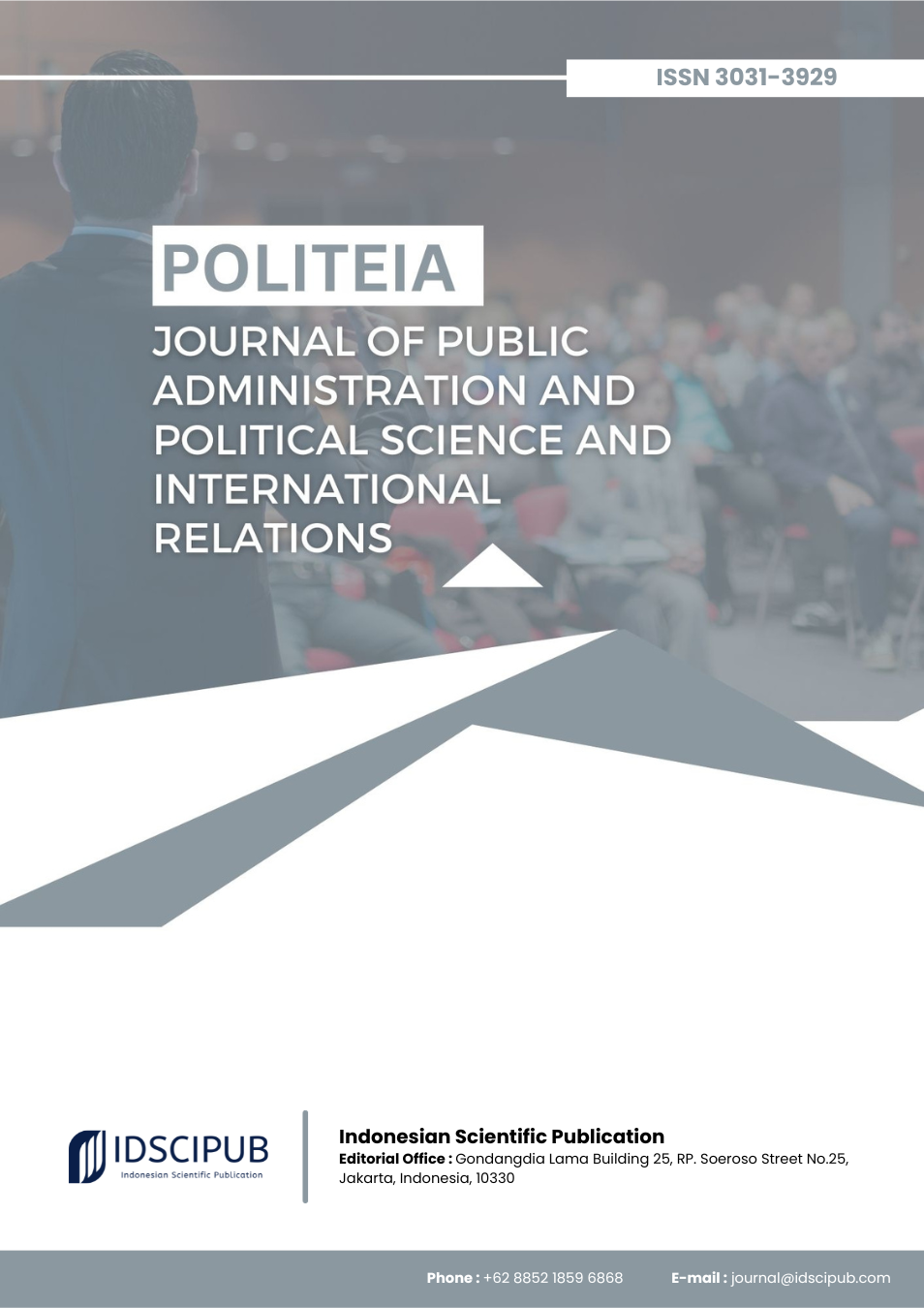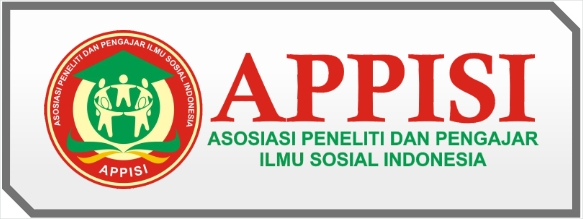Comparison of Human Resource Management Characteristics between Public Sector and Private Sector in Indonesia in the Era of Digital Transformation
DOI:
https://doi.org/10.61978/politeia.v2i2.434Keywords:
HRD, Public Sector, Private Sector, Digital Transformation, Comparative ManagementAbstract
This study compares human resource management (HRM) characteristics between Indonesia's public and private sectors in the context of digital transformation. Both sectors face increasing complexity due to digitalization and changing work paradigms. The private sector contributes 58.2% to GDP, while 68% of 4.2 million civil servants face a mismatch between competencies and job demands. The study aims to analyze the differences, challenges, and opportunities in HRM, focusing on regulatory aspects, management practices, and their impact on organizational performance. The novelty lies in the comparative approach that integrates digital transformation in HRM analysis, which has been underexplored in previous studies. Using a qualitative methodology, the research analyzes academic literature and policy documents from 2019-2024, with constant comparative analysis and source triangulation for validity. The findings reveal significant differences in organizational orientation, regulation, recruitment, motivation, and accountability. The public sector focuses on stability and regulatory compliance, while the private sector prioritizes flexibility and adaptability. This study offers theoretical implications for a new conceptual framework in comparative HRD studies and practical recommendations for optimizing HRD in the digital era, such as developing an integrated talent management system, reforming compensation policies, and strengthening cross-sector collaboration. Limitations include the study's geographic and temporal scope, suggesting further research with mixed-methods and longitudinal approaches to explore HRD practices and technological evolution. This study contributes to understanding HRD dynamics and informs the development of adaptive HRD policies in the digital age.
References
Afriyani, F., Hasan, L. D., Rokhmat, A., Wahyudin, Y., & Syarweny, N. (2024). Manajemen Sumber Daya Manusia: Teori Komprehensif dalam MSDM. PT. Sonpedia Publishing Indonesia.
Anshori, M. (2019). IMPLEMENTASI PENILAIAN KINERJA PADA BADAN LAYANAN UMUM: STUDI TENTANG KOMITMEN, PENENTUAN TUJUAN. DAN HARAPAN KARYAWAN, 1–12. DOI: https://doi.org/10.33105/itrev.v4i1.111
Ardiansyah, N. (2024). Peran Kepemimpinan dalam Meningkatkan Pelayanan Publik krusial , karena pemimpin memiliki peran sentral dalam mengarahkan visi , mengelola sumber.
Arifin, M. Z. (2024). Tantangan dan peluang msdm terhadap perkembangan teknologi (Vol. 2, Issue 12).
Basuki. (2021). PENGARUH PRAKTIK SUMBER DAYA MANUSIA TERHADAP PERILAKU KEWARGANEGARAAN ORGANISASI (Vol. 7, Issue April, pp. 102–115). DOI: https://doi.org/10.31602/alsh.v7i1.4688
Budiani, M. S. (2008). Perbandingan pengelolaan sumber daya manusia dalam organisasi pemerintah dan non pemerintah.
Dekrita, Y. A. (2021). Kinerja keuangan rumah sakit badan layanan umum daerah: tinjauan manajemen kas, piutang, modal kerja, hutang, dan sumber daya manusia. Penerbit NEM.
DIGITAL, N. A. K. R. E. A. T. I. V. I. T. A. S. D. A. N. I. N. O. V. A. S. I. D. A. L. A. M. R. E. D. A. K. S. I. (2024). KOMODIFIKASI BERITA MENJADI VIDEO PENDEK DI. TIKTOK, 3(2), 121–138.
Diniarsa, M. R., & Batu, R. L. (2023). Evaluasi Penerapan Kebijakan Diversitas Dan Inklusi Dalam Manajemen Sumber Daya Manusia Terhadap Kinerja Organisasi. J Ilm Manajemen, Ekon Akunt, 7(2), 1439–1456. DOI: https://doi.org/10.31955/mea.v7i2.2852
Fadhly, Z., Ilmu, F., Dan, S., Politik, I., & Teuku, U. (2019). Perbandingan manajemen sektor pemerintah dengan sektor swasta (Vols. 186–95). DOI: https://doi.org/10.35308/jpp.v2i2.1014
Faustino, A. A. (2022). PENGARUH REKRUTMEN DAN PENGEMBANGAN KARIER TERHADAP KINERJA KARYAWAN PADA PT. CARDIG AIR, 20(4), 321–330.
Gorgievski, M. J., Bakker, A. B., Petrou, P., & J, G. C. L. (2023). Antecedents of employee intrapreneurship in the public sector: a proactive motivation approach. Int Public Manag J, v;26(6):852–73. DOI: https://doi.org/10.1080/10967494.2023.2255172
Hadjaloka, L. (2014). Studi Penerapan E-Government Di Indonesia Dan Negara Lainnya Sebagai Solusi Pemberantasan Korupsi Di Sektor Publik (Vol. 3). DOI: https://doi.org/10.33331/rechtsvinding.v3i3.35
Hehanussa, S. J. (2024). Akuntansi Sektor Publik. Uwais Inspirasi Indonesia.
IJPDD, P. (2023). Manajemen Sumber Daya Manusia di Sektor Publik. PT. RajaGrafindo Persada.
Kalam, A. L. (2024). Al – kalam issn 2355-3197 (Vol. 11, Issue 1, pp. 175–189). DOI: https://doi.org/10.31602/al-kalam.v11i1.13169
Kleiman, L. (n.d.). Human Resource Management: A Managerial Tool for Competitive Advantage Third Edition. Dreamtech Press.
Mokobombang, W., Natsir, N., Tinggi, S., Administrasi, I., Makassar, Y., & Organisasi, K. (2024). Strategi Pengembangan Sumber Daya Manusia Dalam Meningkatkan Kinerja Organisasi. : : Tinjauan Pada Industri Jasa, 13, 606–618. DOI: https://doi.org/10.33395/jmp.v13i1.13756
Pratama, D. W., Aotearoa, G. H., Kristen, U., Wacana, K., & Barat, J. (2024). Kerangka Kerja Inovasi Digital untuk Organisasi Skala Kecil. : : Integrasi Teori dan Praktik yang, 14(2), 154–168. DOI: https://doi.org/10.33020/saintekom.v14i2.641
Pratama, M. R., Administrasi, F. I., Brawijaya, U., Kinerja, P., Publik, S., & Sipil, P. N. (2021). Tantangan membangun manajemen dan pengukuran kinerja sektor publik di indonesia (Vol. 05, Issue 01, pp. 1–13). DOI: https://doi.org/10.30737/mediasosian.v5i1.1632
Prayogo, H. P., Aviachi, T., Shamsuddin, L. M., & Ahmadi, H. A. (2024). Analisis Kebijakan Pengalokasian Anggaran Training and Development pada Sektor Publik (Vol. 7, pp. 6821–6828). DOI: https://doi.org/10.54371/jiip.v7i7.4730
prinsip, S. P. P., A, S., M, S., prinsip, G. P. P., C, G., & DI, P. (2024). Implementation of Good Corporate Governance Principles in Pt (pp. 2024 1138–53).
Putri, E. Y., Putri, A., Rahma, A. R., & Maolani, F. M. (2022). Penerapan Praktek Manajemen Sumber Daya Manusia Dan Hubungannya Dengan Kinerja Karyawan. J Ekobis Ekon Bisnis Manaj, 12(2), 343–356. DOI: https://doi.org/10.37932/j.e.v12i2.618
Rosidah, A. T. S. (2009). Manajemen Sumber Daya Manusia: Konsep. Teor dan Pengemb dalam konteks Organ Publik, yogyakarta Graha Ilmu.
Salam, D. S. (n.d.). Manajemen Pemerintahan Indonesia. Djambatan.
Stewart, J., & Ranson, S. (n.d.). Management in the public domain. Public Money Manag, Mar;8(1–2):13–9. DOI: https://doi.org/10.1080/09540968809387456
Tarbiyah, K. F., Uin, K., Makassar, A., No, Y. L., & Email, M. (2018). Sumber daya manusia sebagai sumber keunggulan kompetitif.
Wardani, R. (2020). Pengaruh Beban Kerja Dan Lingkungan Kerja Terhadap Stres Kerja Pada Karyawan Puskesmas Kediri Lombok Barat Ntb. J Akunt dan Keuang Syariah - ALIANSI, 3(1), 90–105. DOI: https://doi.org/10.54712/aliansi.v3i1.174
Widyanti, R. (2023). ENGEMBANGAN KARIR INDIVIDU DALAM KEWIRAUSAHAAN: Studi (Vol. 10, Issue 1, pp. 119–133). DOI: https://doi.org/10.31602/al-kalam.v10i1.9985
Yuliana, S. E., Asep Deni, M. M., Suacana, I. W. G., Yuningsih, N., Achmad, H. M., & Ashariana, M. (2024). MANAJEMEN SUMBER DAYA MANUSIA DALAM SEKTOR PUBLIK. CV Rey Media Grafika.







